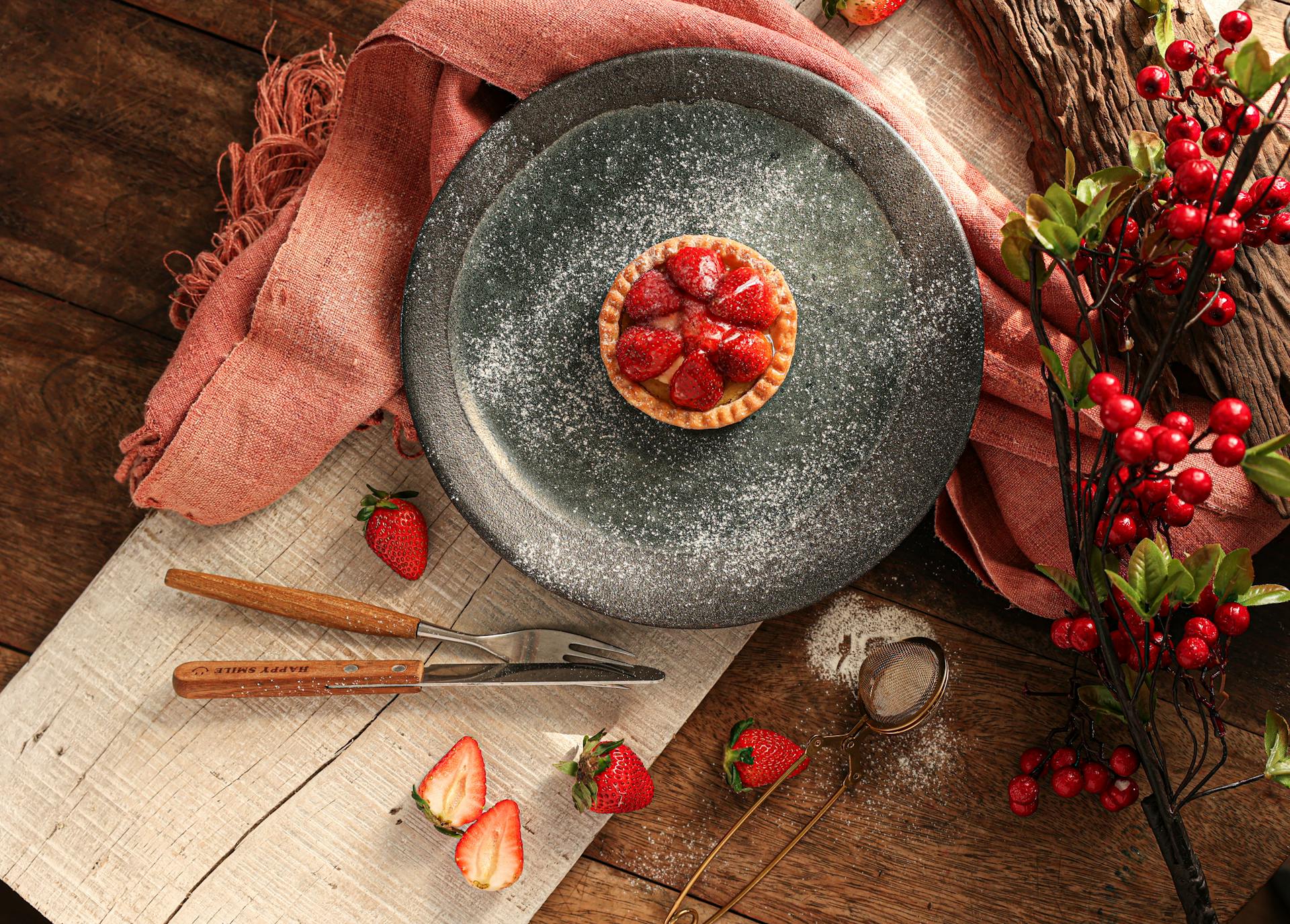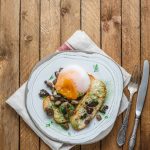Non-stick cookware transforms home cooking by significantly reducing the amount of fat needed in meal preparation. This innovative kitchenware not only enhances flavor but also promotes healthier eating habits. By using less oil or butter, you can savor delicious meals while lowering your overall fat consumption. Discover how non-stick options can elevate your culinary skills and improve your health without sacrificing taste, making each dish a guilt-free delight. Embrace the change and step into a new era of cooking.
Understanding Non-Stick Cookware
Non-stick cookware has revolutionised the culinary world by allowing for healthier cooking with less fat. This type of cookware is typically made from materials like Teflon, ceramic, or anodised aluminium, which provide a smooth surface that prevents food from sticking. The primary advantage of non-stick cookware is its ability to facilitate cooking with minimal or no added fat, making it an excellent choice for those looking to reduce their fat intake.
Have you seen this : Top 5 Resilient Materials for Kitchen Drawer Interiors in Humid Climates
Cooking with less fat not only supports a healthier lifestyle but also enhances the natural flavours of food. By using non-stick cookware, individuals can prepare meals that are lower in calories without sacrificing taste. This is particularly beneficial for those managing weight or cholesterol levels, as it allows for the enjoyment of fried or sautéed dishes without the excess oil.
The importance of reducing fat in cooking cannot be overstated. Excessive consumption of fats, especially saturated and trans fats, is linked to various health issues, including heart disease and obesity. Non-stick cookware provides a practical solution by enabling the preparation of delicious meals that align with dietary goals.
In the same genre : Top 5 Resilient Materials for Kitchen Drawer Interiors in Humid Climates
Advantages of Non-Stick Cookware
Non-stick cookware offers numerous benefits that enhance the cooking experience. One of the most significant advantages is its ease of cooking. The smooth surface of non-stick pans ensures enhanced food release properties, making it effortless to flip pancakes or slide an omelette onto a plate without sticking. This feature is particularly beneficial for novice cooks or those who prefer less fuss in the kitchen.
Another key benefit is the reduced need for cooking oils and fats. With non-stick cookware, you can prepare meals with minimal oil, aligning perfectly with health-conscious cooking. This not only supports a healthier diet but also preserves the natural taste of the ingredients, allowing you to savour the true flavours of your dishes.
Moreover, non-stick cookware offers time-saving benefits. The ease of cleaning these pans means less time spent scrubbing, allowing for more efficient meal preparation. This convenience is invaluable for busy individuals who want to enjoy home-cooked meals without the hassle of extensive clean-up.
Practical Cooking Tips
When it comes to using non-stick cookware, understanding the right techniques and maintenance practices can greatly enhance your cooking experience. Below are some essential tips to help you make the most of your non-stick pans and ensure they last longer.
Proper Care and Maintenance
To maintain the non-stick surface, it's crucial to follow specific care guidelines. Avoid using metal utensils, as they can scratch and damage the coating. Instead, opt for silicone, wood, or plastic utensils. Cleaning should be gentle; use a soft sponge and mild detergent, steering clear of abrasive pads that can wear down the surface. Proper storage is also key—stacking pans can lead to scratches, so consider using a protective layer between them.
Techniques for Cooking with Non-Stick
Healthy cooking methods are easily achieved with non-stick cookware. Start by preheating the pan on low to medium heat, as high temperatures can degrade the non-stick coating. Use minimal oil or butter to maintain the health benefits. For optimal results, cook foods that naturally release moisture, like vegetables and lean meats, which can be prepared without sticking or burning.
Safe Utensils to Use
Choosing the right utensils is essential for preserving the non-stick surface. Silicone spatulas, wooden spoons, and plastic ladles are ideal for handling food without scratching the pan. These materials are gentle on the coating, ensuring longevity and effectiveness. By using safe utensils, you can enjoy the full benefits of non-stick cookware, allowing for effortless cooking and easy clean-up.
Comparison with Traditional Cookware
When evaluating non-stick vs traditional cookware, it's essential to consider differences in cooking efficiency and health impact. Traditional cookware, often made from stainless steel or cast iron, requires more oil or fat to prevent food from sticking. This can lead to higher calorie meals, contrasting with the healthier options facilitated by non-stick surfaces.
Differences in Cooking Methods and Outcomes
Traditional cookware can withstand higher temperatures, making it suitable for techniques like searing and browning. However, non-stick cookware excels in cooking efficiency for delicate dishes, such as eggs or fish, due to its enhanced food release properties. The choice between these types depends on the desired cooking method and the specific dish being prepared.
Health Implications
Using traditional cookware may necessitate more cooking oils, potentially impacting health by increasing fat intake. Non-stick cookware, on the other hand, supports healthier cooking by reducing the need for additional fats. This can be particularly beneficial for individuals managing cholesterol or weight, offering a practical solution for healthier meal preparation.
Cost-Effectiveness of Non-Stick Options
While traditional cookware is known for its durability, non-stick options can be more cost-effective in the short term due to their ease of use and maintenance. The reduced need for cooking oils and simpler cleaning process contribute to long-term savings. However, it's important to consider the lifespan of non-stick coatings, as they may require replacement sooner than their traditional counterparts.
Healthy Recipes Using Non-Stick Cookware
Cooking with non-stick cookware is not only convenient but also supports the creation of healthy recipes. The ability to cook with less oil makes it ideal for preparing a variety of low-fat meals that are both nutritious and delicious.
Quick and Easy Breakfast Ideas
Start your day with a nutritious breakfast that takes advantage of non-stick cooking. A vegetable omelette is a perfect choice, requiring minimal oil. Simply whisk eggs with a splash of milk, pour them into a preheated non-stick pan, and add your favourite vegetables like spinach, tomatoes, and bell peppers. The non-stick surface ensures the omelette cooks evenly without sticking, making it easy to fold and serve.
Light Lunch Options
For a quick and satisfying lunch, consider a grilled chicken salad. Use a non-stick grill pan to cook chicken breasts with just a light mist of cooking spray. The non-stick feature allows the chicken to develop a perfect sear without excess fat. Pair the grilled chicken with mixed greens, cherry tomatoes, and a squeeze of lemon for a refreshing meal that's both healthy and flavourful.
Dinner Recipes for the Whole Family
Dinner time can be a delightful experience with non-stick cooking. Prepare a stir-fry using lean meats like turkey or tofu and a variety of colourful vegetables. The non-stick wok requires only a small amount of oil to prevent sticking, resulting in a dish that's rich in nutrients and low in fat. Serve the stir-fry over brown rice or quinoa to complete this wholesome family meal.






